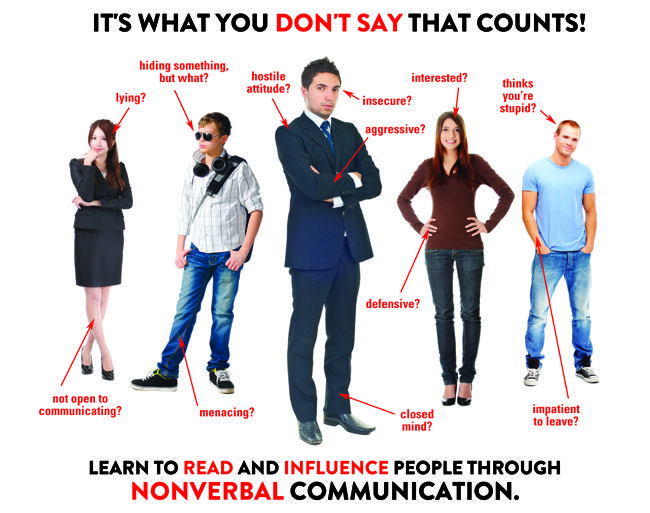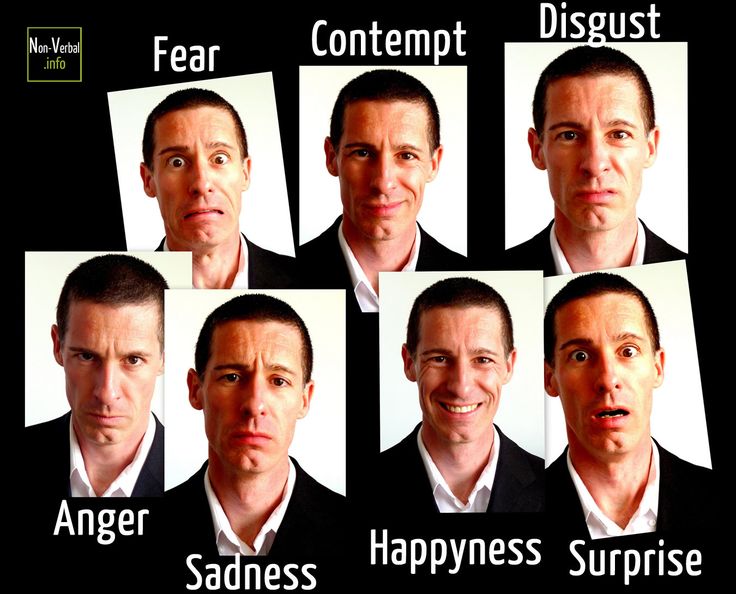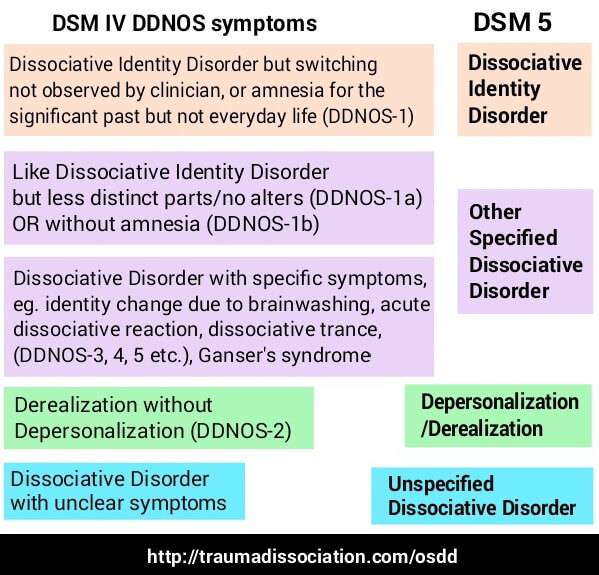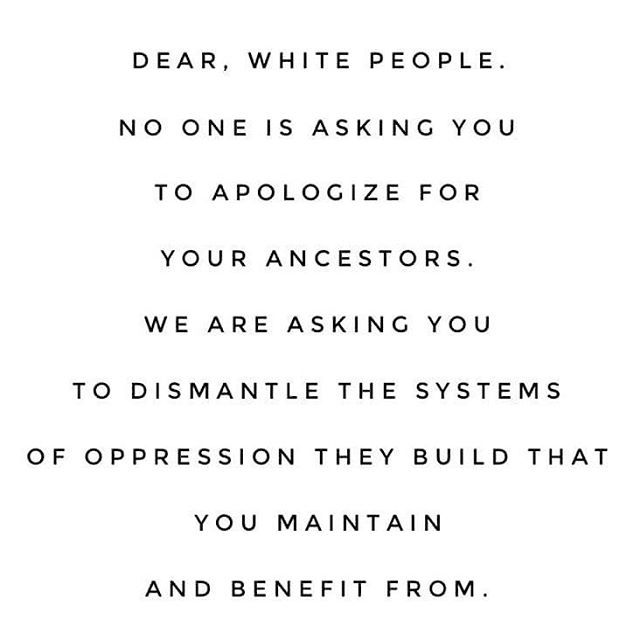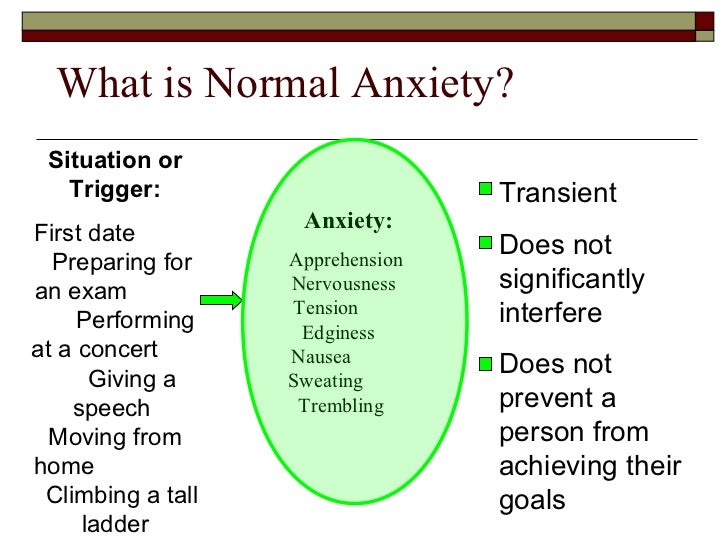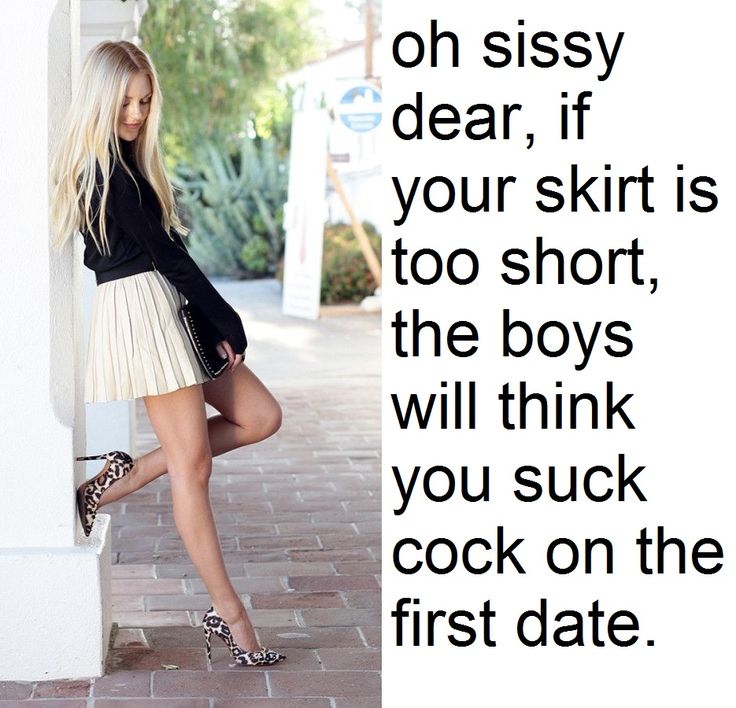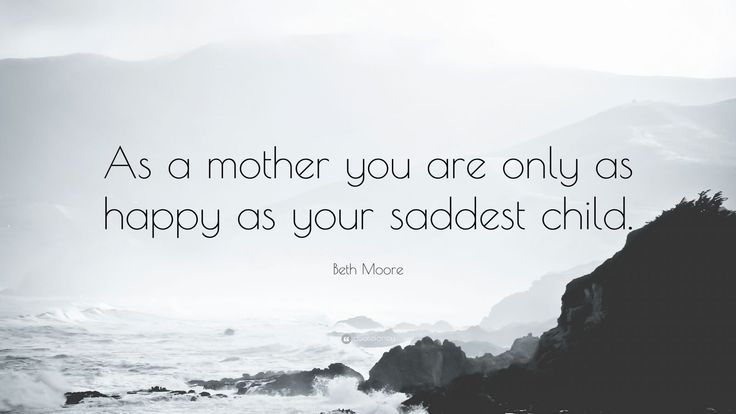Body language personality types
Your Myers-Briggs® Personality Type and Your Body Language
Did you know there are some external cues you can look for when identifying someone’s personality type? In this article, I’m going to lay out some of the basics for “type spotting” based on body language.
Not sure what your personality type is? Take our new personality questionnaire here. Or you can take the official MBTI® here.
Table of contents
- Here’s How Your Body Language and Your Personality Type Are Connected
- The Body Language Differences Between Introverts and Extroverts:
- The Body Language of ISTJs, ISFJs, ESTJs, and ESFJs
- The Body Language of ISTPs, ISFPs, ESTPs, and ESFPs
- The Body Language of INTJs, INFJs, ENTJs, and ENFJs
- The Body Languages of INTPs, INFPs, ENTPs, and ENFPs
- Sources:
- Want to Know More About Type? Read These Other Articles!
Estimated reading time: 7 minutes
Here’s How Your Body Language and Your Personality Type Are ConnectedThe Body Language Differences Between Introverts and Extroverts:According to physiologists, introverts will be more rigid in social settings. They will use more closed body positions. Their shoulders tend to pull in, they will orient their bodies more away from other people and will initiate touch less than extroverted personality types. They are more likely to cross their arms in public, and they tend to give more personal space to the person they are speaking to. They are less likely to talk with their hands and are less likely to suddenly “explode” with laughter. They also tend to break eye contact sooner, and by looking to the right.
Extroverted types tend to turn towards people who are talking and they usually use more facial expressions and hand gestures as well. They will move around the room more and talk to a wider variety of people. Physiologists also believe that extroverted personality types can hold eye contact longer, and break contact by looking to the left.
The Body Language of ISTJs, ISFJs, ESTJs, and ESFJsSJ personality types tend to have good posture and sit and stand up straight.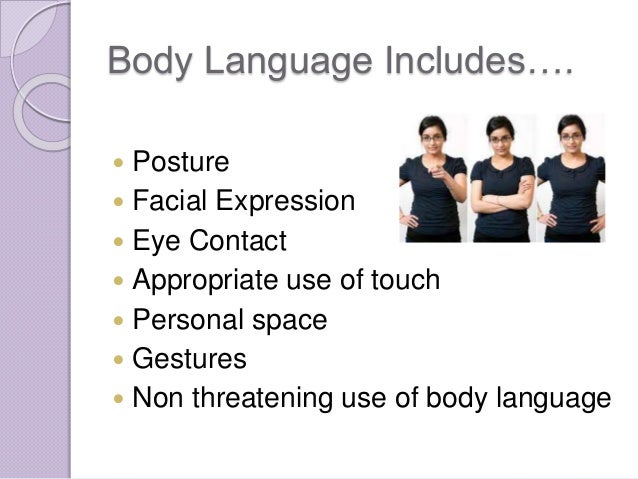 When they move they do so with focus and purpose – they know where they are going and they are anxious to get there. Sometimes (but not always) they can lose sight of what’s around them in their quest to get where they need to go. They usually walk deliberately rather than meandering, unless the purpose of the walk is just to enjoy conversation with a friend. ISTJs and ISFJs who have dominant introverted Sensing (Si) tend to have an intensive/focused gaze and are unlikely to let their eyes wander around the room when they’re talking to someone. ISTJs and ESTJs tend to have more fixed/tense upper lips according to typologist Erik Thor. They also tend to have more blunt and succinct movements – head nods and gestures tend to be quick and precise.
When they move they do so with focus and purpose – they know where they are going and they are anxious to get there. Sometimes (but not always) they can lose sight of what’s around them in their quest to get where they need to go. They usually walk deliberately rather than meandering, unless the purpose of the walk is just to enjoy conversation with a friend. ISTJs and ISFJs who have dominant introverted Sensing (Si) tend to have an intensive/focused gaze and are unlikely to let their eyes wander around the room when they’re talking to someone. ISTJs and ESTJs tend to have more fixed/tense upper lips according to typologist Erik Thor. They also tend to have more blunt and succinct movements – head nods and gestures tend to be quick and precise.
SFJ personality types (ISFJs and ESFJs) have more fluid, elongated movements. They are more animated facially and tend to exude more warmth and use more hand gestures to show camaraderie. However, sometimes SFJ types fluctuate between using extraverted Feeling (Fe) and introverted Thinking (Ti).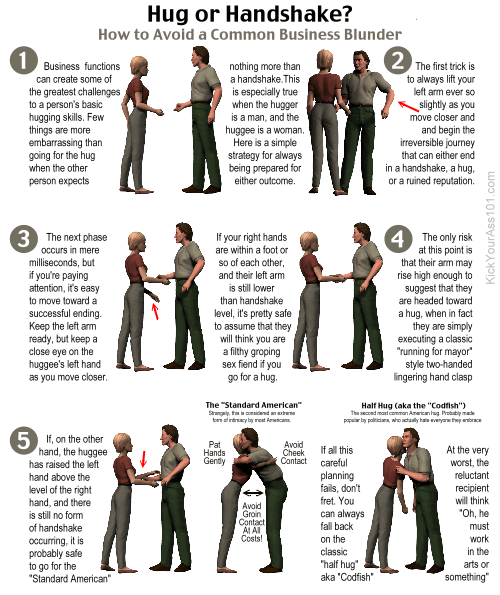 When they are using Ti they can become much more stoic and unreadable.
When they are using Ti they can become much more stoic and unreadable.
To learn about communication giveaways for the different personality types, click here.
The Body Language of ISTPs, ISFPs, ESTPs, and ESFPsOne of the first things you’ll notice about SP personality types is that they seem attentive yet easy-going. Sensing perceivers are usually alert to their environment and they want to enjoy whatever it has to offer. They usually have the greatest body awareness of all the types and are nearly always conscious of what they are doing physically and where they are in relation to everything else. They have fluid movements and rarely bump into things or lose sight of where they are going. ESFPs and ESTPs tend to use a lot of gesticulations and hand motions in their speech and have a more animated style of speaking. However, when they are analyzing something they often appear stoic, flat or unreadable. ESTPs and ISTPs lose almost any expression when they are analyzing something and tend to look downward and disengage with people.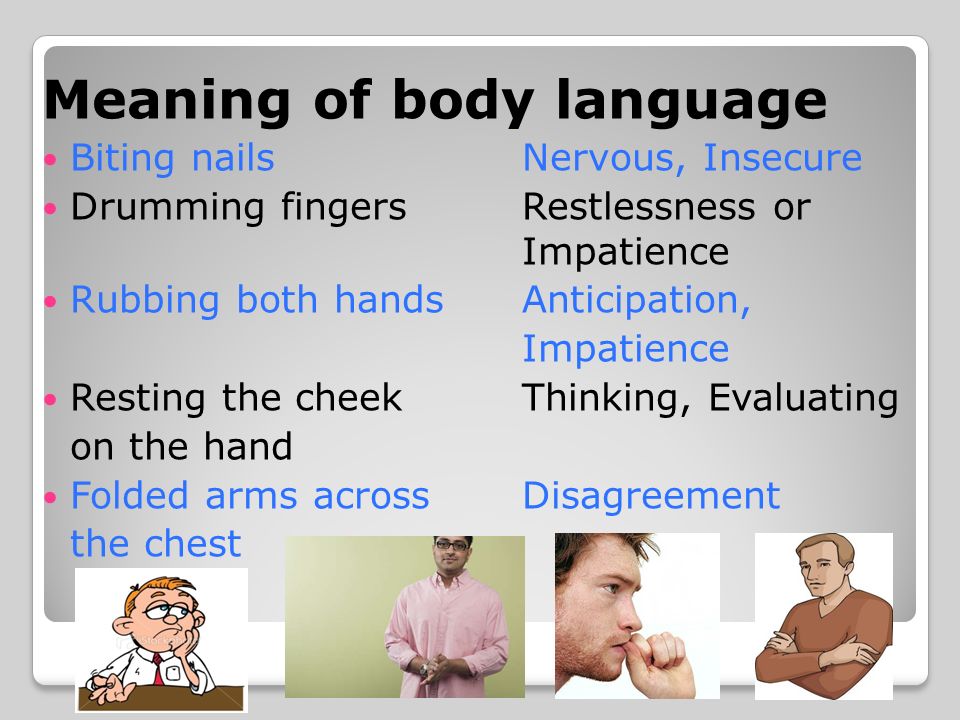
According to typologist A.J. Drenth, “The eyes of SP types often appear wide and alert.” He also says that SP types are unlikely to seem distracted, and, in fact, they tend to “lock in” to the person they are speaking to with a steady, piercing gaze.
To learn more about SP personality types, click here.
The Body Language of INTJs, INFJs, ENTJs, and ENFJsNJ personality types tend to have a focused look about them. INTJs and INFJs tend to appear somewhat detached from their surroundings as they look for underlying meanings and patterns. However, all NJ types frequently drift their eyes a bit to one side and focus on something slightly downward as they think. They alternate between doing this and gazing intently at the people they are speaking to.
NJs are usually less aware of what’s going on around them than sensing types. They inhabit the world of concepts and imagination and therefore are not naturally as skilled at seeing details.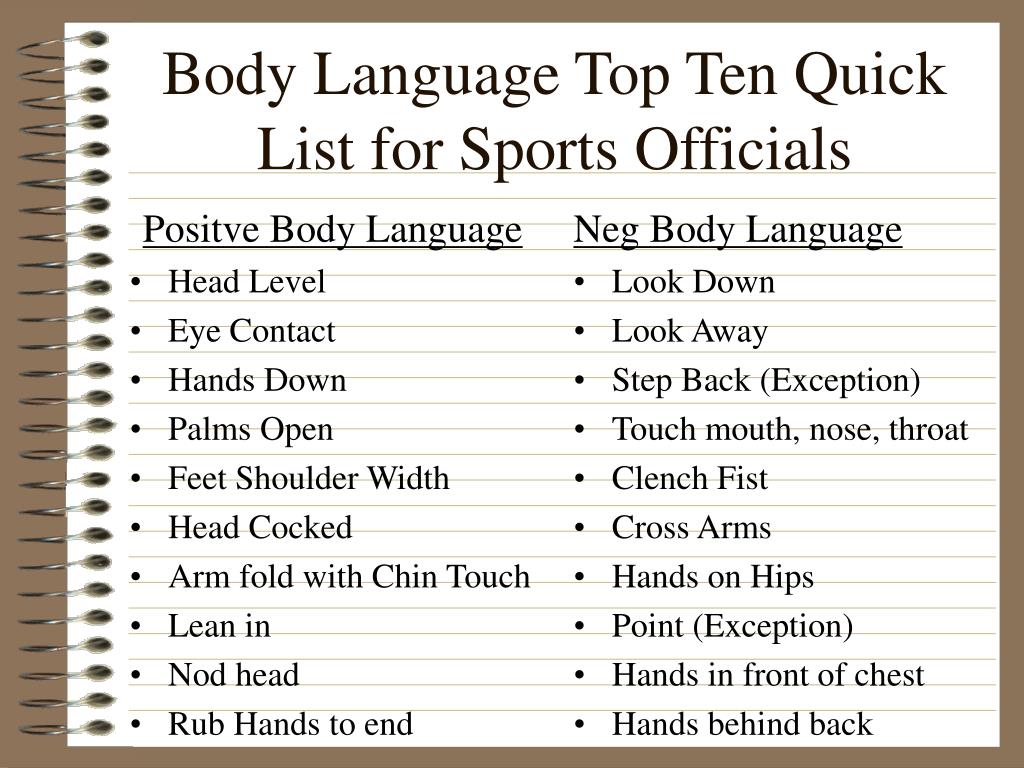 They may even seem awkward in their environment, bumping into things and not noticing details like the edges of tables or the beginning of a flight of stairs. Some intuitives learn to overcome this weakness, but it tends to take practice, whereas sensing types (especially SP types) move more fluidly and with less practice.
They may even seem awkward in their environment, bumping into things and not noticing details like the edges of tables or the beginning of a flight of stairs. Some intuitives learn to overcome this weakness, but it tends to take practice, whereas sensing types (especially SP types) move more fluidly and with less practice.
ENFJs and INFJs, because they use extraverted Feeling (Fe), tend to infuse more emotion into what they are saying and have more animated, lively facial expressions than INTJs and ENTJs. Their head movements tend to be more fluid and less rigid. However, they can sometimes become stoic and unreadable in their expression if they’re trying to logically analyze something.
ENTJs and INTJs tend to use quick head nods and gestures that are precise and to the point. Their movements are sharper and they have more fixed/tense upper lips.
To learn more about NJ personality types, click here.
The Body Languages of INTPs, INFPs, ENTPs, and ENFPsAll NP personality types use a mental process called extraverted Intuition (Ne).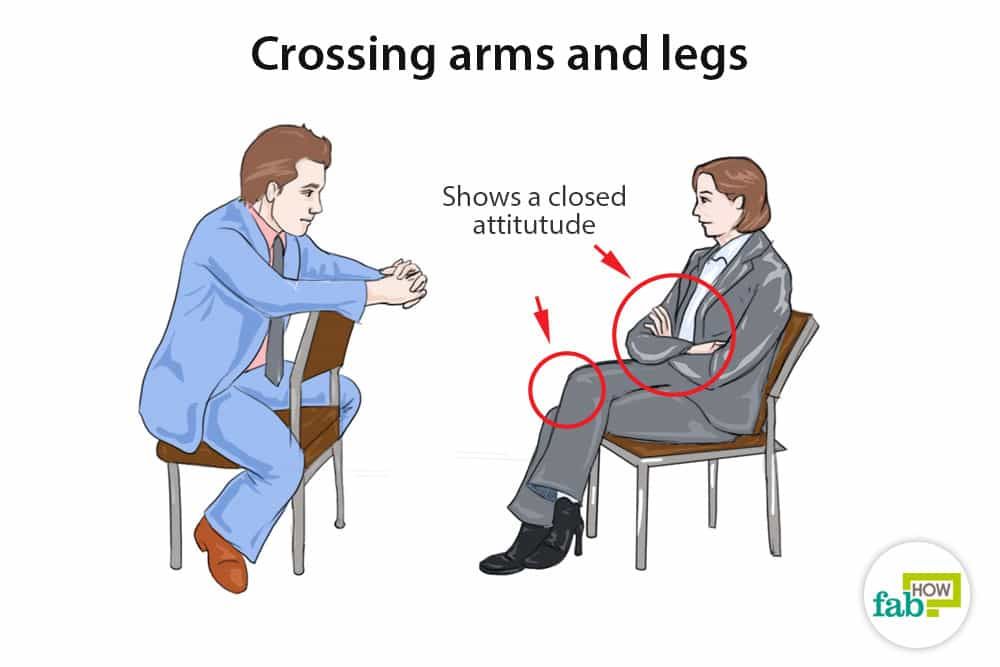 Ne-users have very active eyes that dart from place to place as they think of ideas. Ne-users tend to have eyes that veer from side-to-side as they scan for mental information. It can appear as if they are looking for something that is lost, but they’re trying to find it in their mind, not in the concrete world.
Ne-users have very active eyes that dart from place to place as they think of ideas. Ne-users tend to have eyes that veer from side-to-side as they scan for mental information. It can appear as if they are looking for something that is lost, but they’re trying to find it in their mind, not in the concrete world.
Like all intuitives, NPs are less aware of the concrete world around them. They can struggle with bumping into things, or not seeing the edges of tables or chairs. ENFPs and ENTPs are usually lively and expressive when they are talking unless they veer into inward analysis. When ENTPs get in touch with their thinking process they tend to appear stoic and unreadable. When ENFPs get in touch with their feeling process they can appear more reserved, but their eyes will still maintain expression. INFPs and INTPs are more reserved and maintain a more closed posture and need more physical space between them and the people they are with. They are more likely to be hard-to-read than ENFP and ENTP personality types.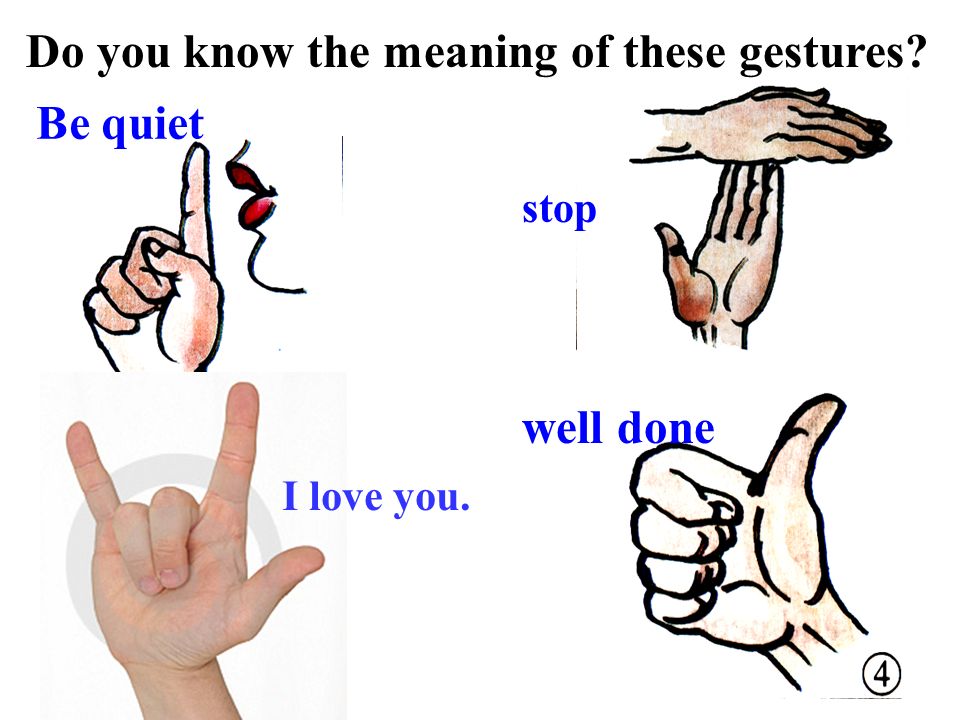
Find out more about your personality type in our eBook, Discovering You: Unlocking the Power of Personality Type.
Sources:Intricate Correlation between Body Posture, Personality Trait and Incidence of Body Pain: A Cross-Referential Study Report
Personality Type and Eye Movements
The Art of Speed-Reading People by Paul D. Tieger & Barbara Barron-Tieger (affiliate link)
Extroverts vs. Introverts – Body Language
Want to Know More About Type? Read These Other Articles!How Each Personality Type Reacts to Stress (and How to Help!)
Here’s the Bad Habit You Need to Break, Based On Your Personality Type
Here’s How You Are Clever, Based On Your Personality Type
- More
Reading the Body Language of the 4 Personality Types
How good are you at reading the body language of others? How should you take it if somebody doesn’t give you personal space—or if they cross their arms?
Thomas Erikson, the creator of personality typing by color, explains that the body language of the four colors varies drastically.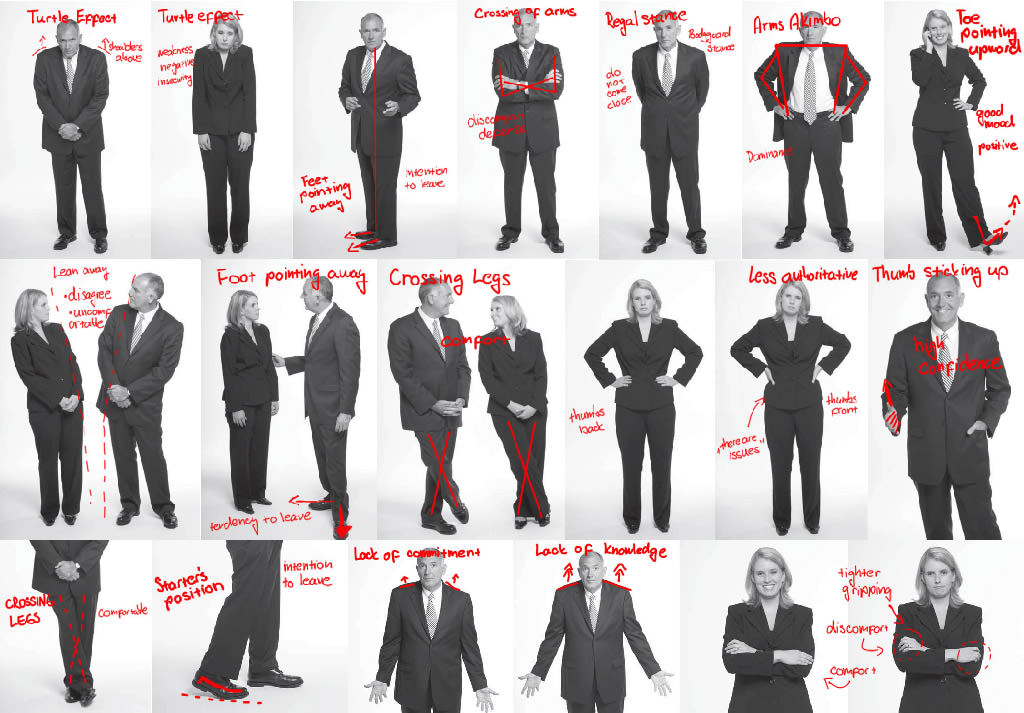 It’s important to understand why somebody is acting a certain way so you don’t misinterpret their actions.
It’s important to understand why somebody is acting a certain way so you don’t misinterpret their actions.
Here’s a breakdown of the body language of the four colors.
In his book Surrounded by Idiots, Thomas Erikson focuses on how each color communicates—and on reading body language in ways that acknowledge various personality types. Here’s an overview of each:
Body Language: Red Personality Type
According to Erikson, everything about a Red personalities’ body language is direct and aggressive. They shake your hand firmly, look into your eyes, lean forward when speaking, and use sharp hand gestures. He says people with this personality type often wear serious, focused facial expressions unless actively engaged in a fun activity.
[Shortform note: Psychology Today describes how some men use body language to dominate others (especially women). Lingering and intense eye contact, invasion of personal space, and non-consensual touching (such as shushing someone by touching their lips), are all warning signs that someone is attempting to intimidate you.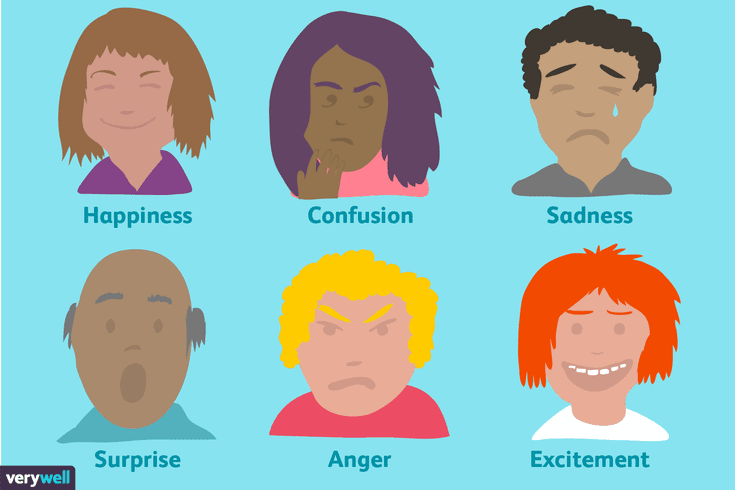 ]
]
Body Language: Yellow Personality Type
Erikson says Yellow personalities have little to no sense of personal space. They have no problem sitting close to another person, they enjoy hugging, and they touch people frequently. He says this might look like a knowing hand on the shoulder or a joking slap on the back. Yellow personality types smile without obvious reason and have a relaxed, comfortable posture.
(Shortform note: If this is your body language style, it’s helpful to know when another person is feeling uncomfortable by your proximity. If a person feels that their personal space is being invaded, they might back up, clutch a drink or bag against their chest, or crane their neck backward.)
Body Language: Green Personality Type
According to Erikson, Green personality types maintain friendly eye contact, a gentle smile, and aren’t averse to hugging. They are okay with touching if they know you well, but they prefer personal space when it comes to strangers and acquaintances.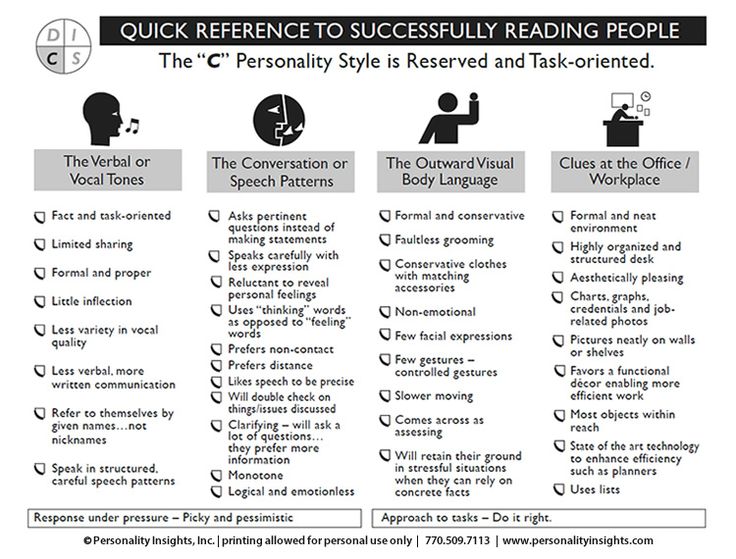 Erikson says this personality type tends to lean backward when sitting and generally maintain a relaxed posture.
Erikson says this personality type tends to lean backward when sitting and generally maintain a relaxed posture.
(Shortform note: Erikson says people with this personality type are great listeners, and their body language supports the theory. To show that you’re listening, experts recommend many of the behaviors listed here. They also suggest using head movements—for example, nodding signals that you understand, and slightly tilting your head communicates curiosity.)
Body Language: Blue Personality Type
According to Erikson, Blue personalities exhibit the least motion in their body language of all the personality types. They’ll sit or stand perfectly still and deliver a message without hand gestures. Their facial expressions are subtle and controlled. People with this personality value personal space, and if you get too close, they’ll cross their arms or legs to signal discomfort.
(Shortform note: “Closed off” body language can be attributed to several factors outside of personality.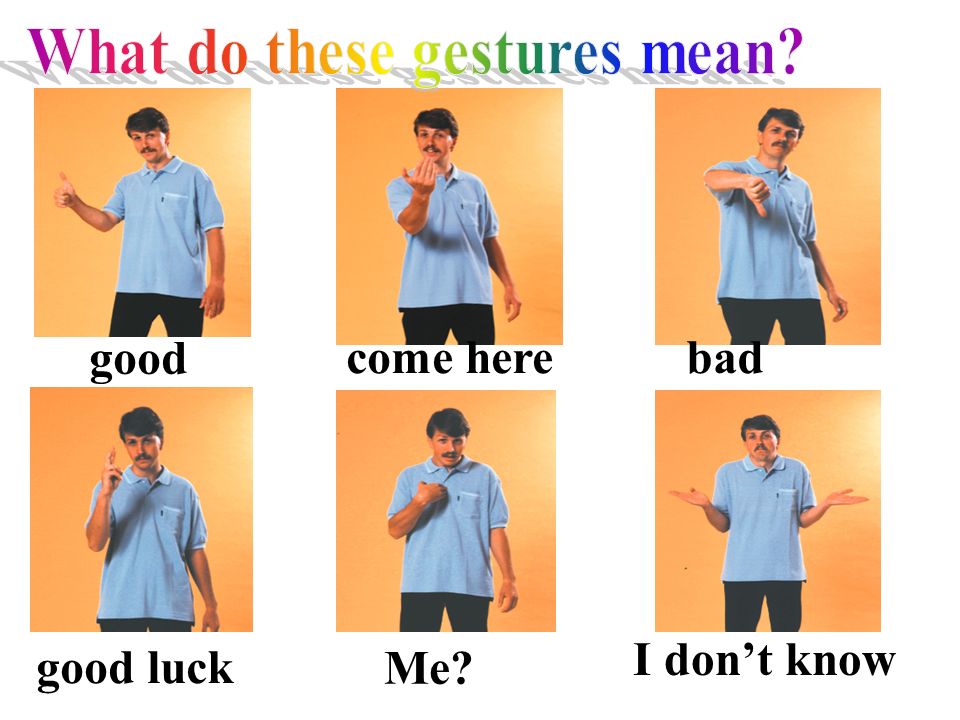 For example, crossed legs and arms can signal that a person is uncomfortable, nervous, or even just cold. A person might control her facial expressions when she is distracted by something, focusing on appearing professional, or listening intently. When assessing a person’s body language as it relates to personality, it’s wise to observe them over time.)
For example, crossed legs and arms can signal that a person is uncomfortable, nervous, or even just cold. A person might control her facial expressions when she is distracted by something, focusing on appearing professional, or listening intently. When assessing a person’s body language as it relates to personality, it’s wise to observe them over time.)
4 personality types (part 1)
Four different styles and their characteristics
| Analytical: · are often perfectionists; · set high standards and want things done right; attention to detail; · well organized, able to work within a bureaucratic system; · require necessary data and information before making decisions; · do not take risks; · agonize over decision-making; · work well alone or with a small group of people; · body language: leaning back, small gestures, not much eye contact or facial expressions; · the most quiet of all styles: thinks a lot before speaking; usually not straight; · As a rule, they speak with facts, not with feelings. | Master: · tend to focus on the result; · love the fast pace of work; most practical style. Set high but realistic goals; · love when something is done. Make quick decisions, even when you are only 55% sure; · more likely to change their minds on some item; · excellent timing; · body language: leaning forward, quick movements, short gestures, serious facial expression; · straightforward in expressing their opinion; · may be genuinely interested in other people, but does not show it. |
| Friendly: usually a team player; · like to work in groups with other people; · do not want to be the center of attention; · support other people and their ideas; · need a stable, well-structured work situation, as they can be distracted by helping others; · indecisive and have difficulty making decisions on their own; · people oriented: very easy going and friendly; · body language: more relaxed posture, more eye contact; often does not openly express his opinions and does not criticize; · Needs to maintain good relationships with people. | Expressive, expressive: The brightest of all styles; · like to tell jokes, be the center of attention; very energetic and active all the time; · love socialization and work in groups; · dreamers - good vision and imagination; · like to communicate in terms of broad generalizations; often, first act and then think; · not always good at time management; body language: fluid gestures, many facial expressions; · can talk more than listen and monopolize the conversation; tend to think aloud; · speak as it is, do not soften arguments; · focused on working with people. |
Wherever you are on each axis, it's a good place to be.
Adapted from: People at Work: Making bad relationships good and good relationships better.
By Robert Bolton and Dorothy Grover Bolton, American Management Association, 1996
How to adapt to the personality type of your interlocutor?
Body language: types, characteristics and examples
Without realizing it, we speak without words, this body of ours says a lot about us, and we hardly perceive it.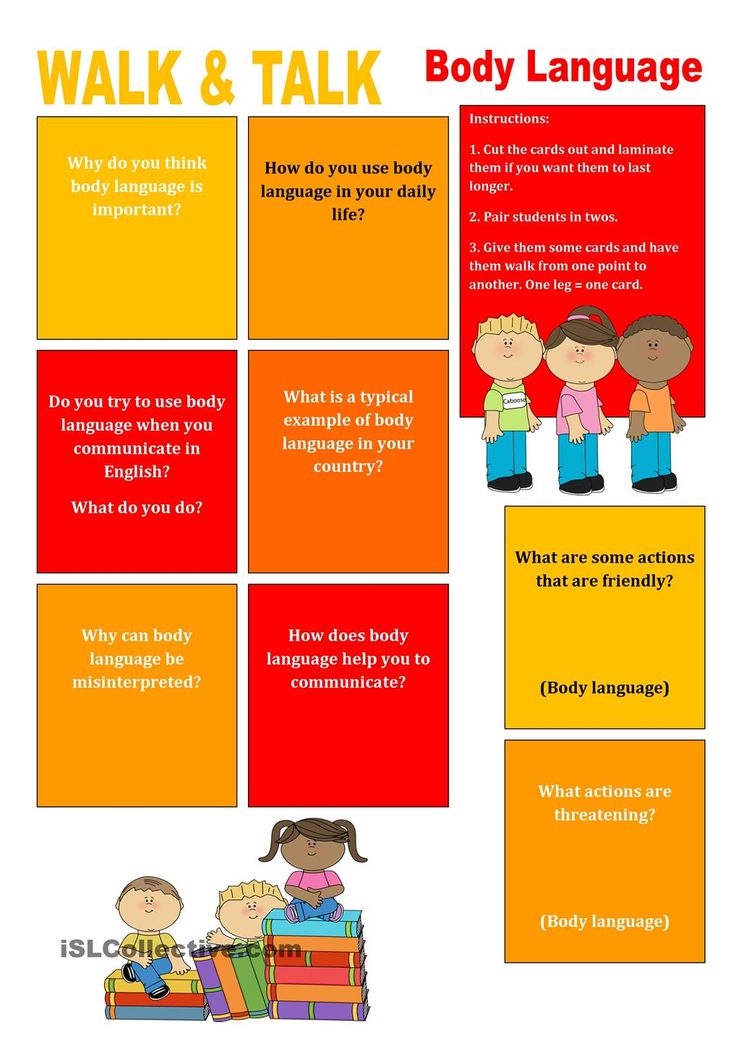 You can say that you agree with something, worse, if you really disagree, your body language will give you away. Only a person who understands body language will be able to know that you really disagree even if you say yes or try to convince otherwise than you think.
You can say that you agree with something, worse, if you really disagree, your body language will give you away. Only a person who understands body language will be able to know that you really disagree even if you say yes or try to convince otherwise than you think.
If you don't know what we mean when we talk about body language, then it's time for you to understand what types are, features that define it and some examples to better understand it.
Index
- 1 4 type of body language
- 1.1 type 1
- 1.2 type 2
- 1.3 Type 3
- 1.4 type 4
- 2 features that you should know
 All people express their body language in four ways: light and dynamic movement, smooth and fluid movement, dynamic and decisive movement or precise and bold movement.
All people express their body language in four ways: light and dynamic movement, smooth and fluid movement, dynamic and decisive movement or precise and bold movement. Each of these movements has a different meaning and corresponds to one of the 4 types of energy. An energy profile is a movement-based personal profile system and everything in our natural world has a dominant type of energy. The two most powerful tools for assessing when discovering your energy type are your facial features and body language.
Let's look at 4 types of body language so you can understand what they mean. Surely you feel that you are a mixture of some of them, but perhaps you have a dominant one ... Don't miss out!
Type 1
Type 1 is associated with upward, light and optimistic energy. You are walking with a floating and fun jetty on your way. You sit and stand, moving around a lot, changing positions frequently. You may seem restless to others, because you do not like to sit or stand still, focusing on one thing for a long time.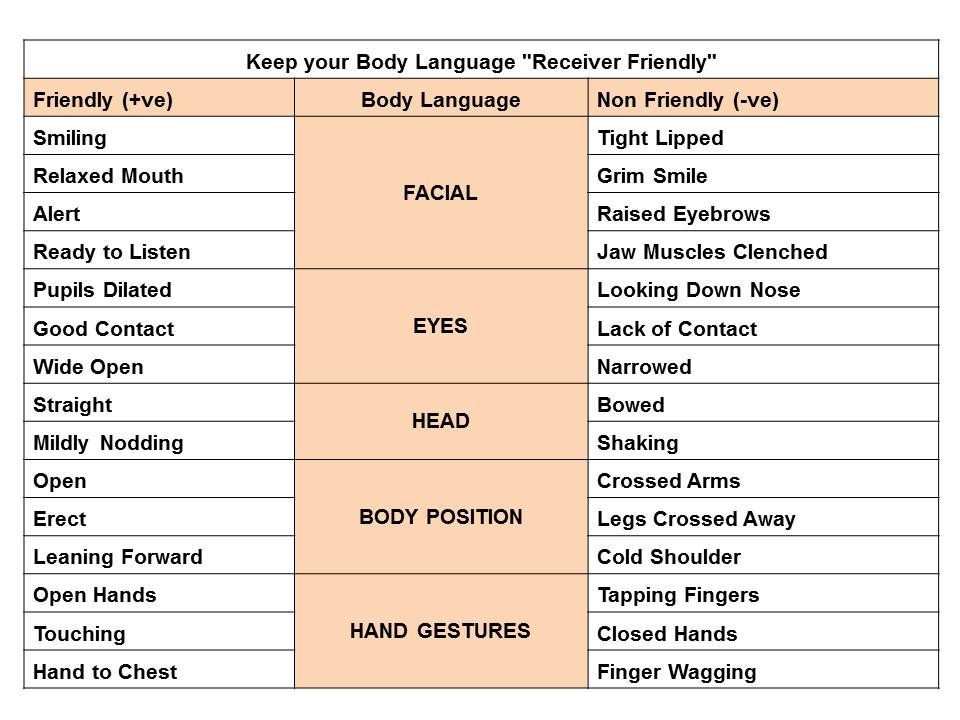 You often sit cross-legged or very comfortably on the floor.
You often sit cross-legged or very comfortably on the floor.
Example: “My brother has always been embarrassed to walk with me through the corridors of our school. He said she was so hyperactive and was always fluttering around like a butterfly, often bumping into things and people."
Type 2
The second type is smooth, flowing energy. You walk smoothly and gracefully. You take longer strides and keep your feet close to the ground. There are no jumps in your step, but rather a very smooth movement. You sit and stand in an S-shaped or relaxed curve with your head to one side.
Example: “I am often at the back of the group, walking 2-3 steps behind my partner and my Type 3 daughter. Just the other day my Type 3 daughter was saying, 'Come on Mom, hurry up!' I told her we didn't have to rush and she said, "I'm type 3. I love to run!"
Type 3
This type has significant active reactive energy.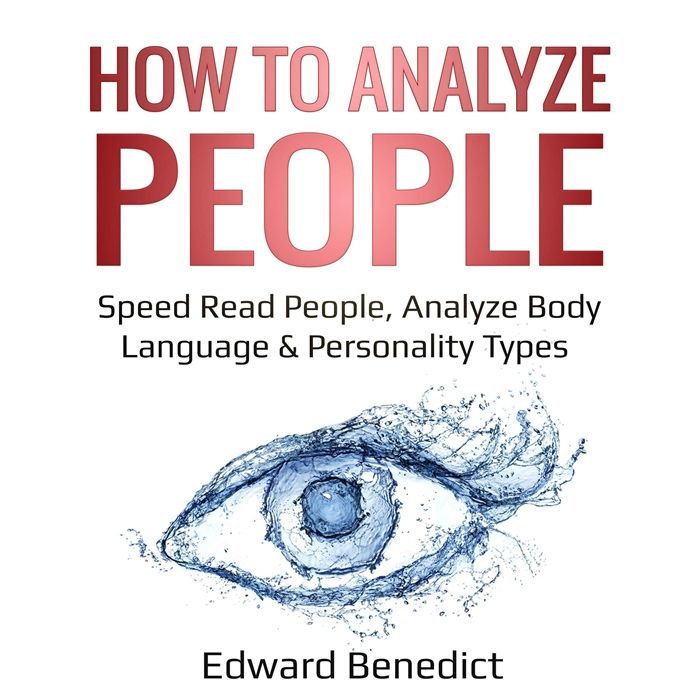 You walk decisively, with a solid plant on your feet, quickly and energetically. Everyone hears you walking. People can hear you even when you sit down due to your deliberate movement. You create angles when you sit down and stand up. Legs crossed, one leg raised under you, head tilted to one side, arms at the waist or body bent at the waist.
You walk decisively, with a solid plant on your feet, quickly and energetically. Everyone hears you walking. People can hear you even when you sit down due to your deliberate movement. You create angles when you sit down and stand up. Legs crossed, one leg raised under you, head tilted to one side, arms at the waist or body bent at the waist.
Example: “The other day I was walking from one side of our house to the other where the rest of my family was. When I entered the room, I noticed that everyone was looking at me. 'What is happening?' I have asked. “Nothing,” my husband said. "We thought you were angry walking around like that." I didn't even notice!
Type 4
This type of energy is constant. You walk very straight, still and majestic, with little movement of the limbs and body. You also sit very straight, with a straight posture, both feet on the ground, arms crossed or hanging at your sides. You usually have a formal look.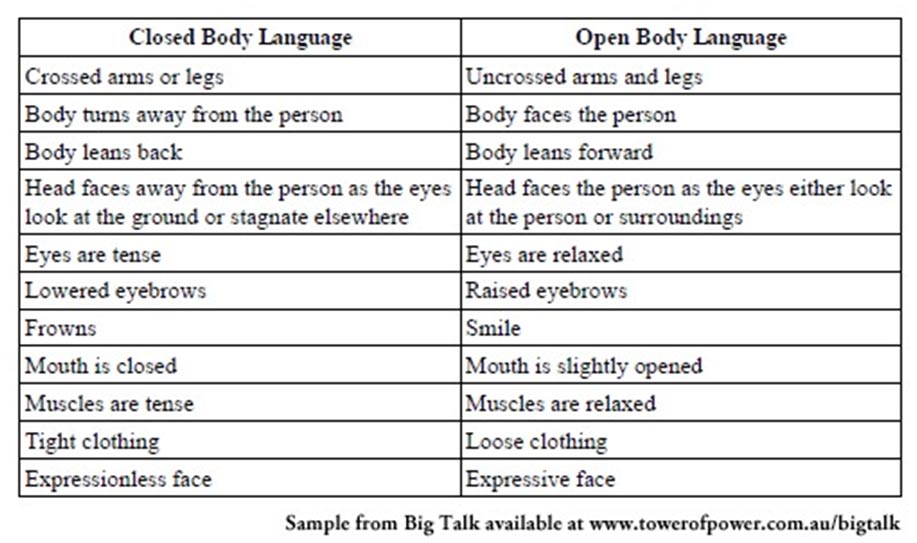 Most runway patterns express a dominant type 4 energy: naturally upright, balanced and structured in movement, with straight shoulders and perfect posture .
Most runway patterns express a dominant type 4 energy: naturally upright, balanced and structured in movement, with straight shoulders and perfect posture .
Example: “My Type 4 husband walks at a steady pace wherever he goes. Usually doesn't slow down. And if you're late, don't rush. In fact, if I rush him, he will stop walking altogether until I stop rushing. He prioritizes the credibility of his movement.”
Features You Should Know
In the 1970s, Albert Mehrabian, a communications specialist at UCLA, revolutionized our understanding of presentation skills. Their experiments showed that the listener's emotional reaction to the speaker's message is more related to it. with the speaker's facial expression and tone of voice than with the actual words the speaker used.
Over the next 30-40 years, distributors and consultants pondered Mehrabian's findings long and hard, arguing that they showed that non-verbal communication mattered more than the speaker's actual words.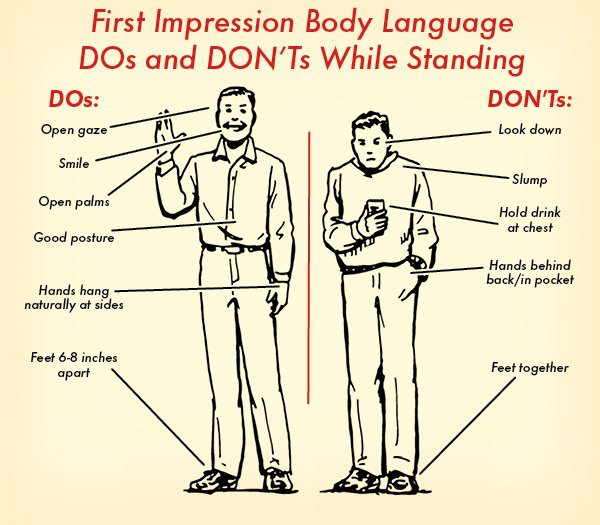 Anyone who has attended a college conference knows that this is unlikely. Mehrabian spoke not about meaning, but about feelings and relationships. So don't believe when someone tells you that you are speaking more in tone and body language than in words.
Anyone who has attended a college conference knows that this is unlikely. Mehrabian spoke not about meaning, but about feelings and relationships. So don't believe when someone tells you that you are speaking more in tone and body language than in words.
However, Mehrabian's work makes it clear that your presentation skills must include tone and body language, because a mistake can sabotage your message by causing a negative emotional reaction. In other words, your presentation is always more than what you say.
If you wish to speak, attend a conference, or speak, you are responsible for your message. You must use your presentation skills to present it clearly and effectively. This means that you must be careful with your body language. You should look natural and enthusiastic. Elements of body language leading is facial expression, balance, foot position and gestures.
- Facial expression. It should be attractive and pleasant.
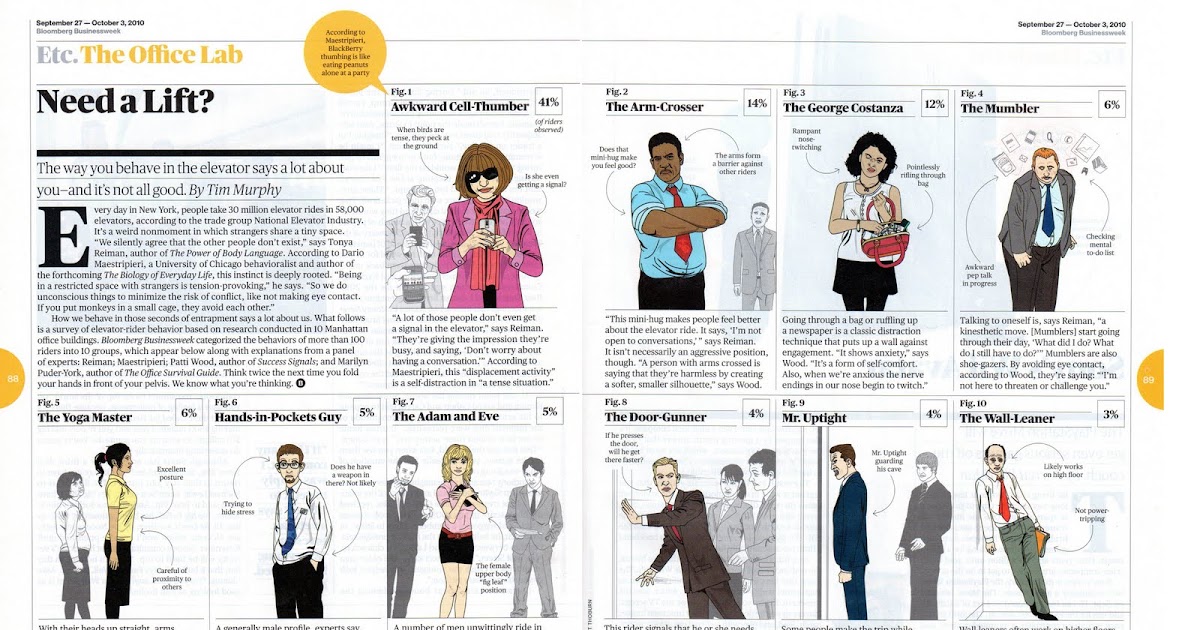 The best way to achieve these qualities is to smile. Smiling brightens up your face and makes you more interesting. It also makes the audience like you more and helps you connect with them. So look the audience in the eyes and smile.
The best way to achieve these qualities is to smile. Smiling brightens up your face and makes you more interesting. It also makes the audience like you more and helps you connect with them. So look the audience in the eyes and smile. - Balance. This means that the weight is distributed evenly between the feet. Stand with your feet shoulder-width apart, hands at your sides (except for gestures). No matter what you are talking about, this pose strengthens you by conveying frankness and authenticity. Good posture radiates energy; poor posture causes apathy or insecurity . When you stand and balance, it seems that you are ready for anything. Vertical does not mean rigid.
- Foot placement. It means staying still, not moving, walking, or hitting, all of which give the impression of being nervous. To emphasize a point, you can walk in a straight line, closer to the audience, but when you do, stop, express the thought and then return to a more neutral position.
